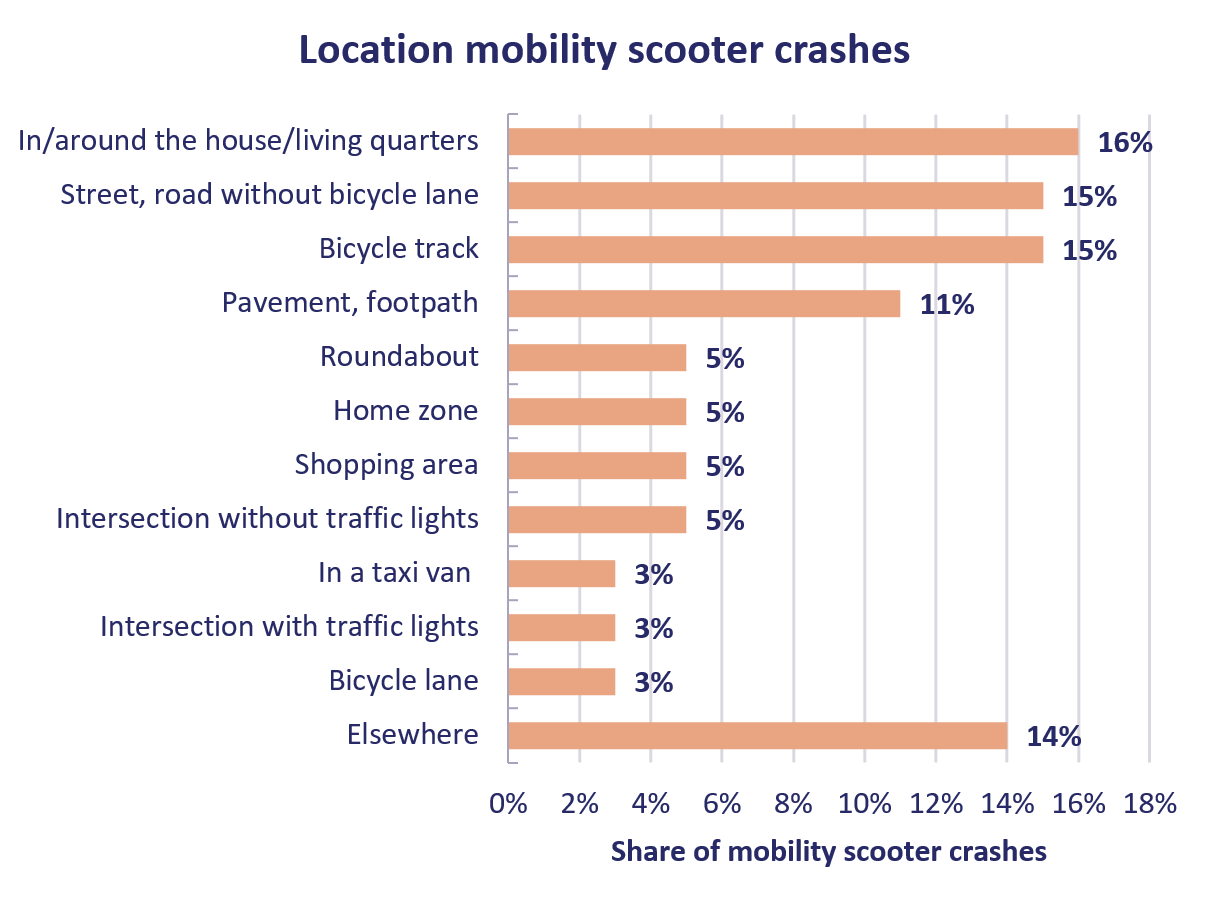When looking at the registered fatal crashes with mobility scooters and enclosed disability vehicles, 94% of them occur in daylight, 86% in dry weather and 75% within the urban area (2010-2019; source: BRON). Mobility scooter crashes mainly occur in daylight during dry weekdays at a familiar location. There is no information available about microcar crash circumstances.
The information about mobility scooters originates from a survey among 115 casualties treated at an emergency room (ER) [10] and from an in-depth study into 35 crashes [5]. The survey showed that most crashes had occurred on weekdays (80%) between 9 am and 4 pm (72%), in the urban area (82%) and at a location familiar to the casualty (88%). The crash had often occurred in or around the house or living quarters (16%), on a road without bicycle lanes or tracks (15%), on a bicycle lane or track (15%) or on a pavement or footpath (11%) (see Figure 5). It should be noted that the largest crash category (in or around the house or living quarters) does not concern road crashes.
 Figure 5. Location of mobility scooter crash (Source: [10]).
Figure 5. Location of mobility scooter crash (Source: [10]).
The in-depth study by SWOV [5] shows a partly similar picture. Of the 35 crashes studied, 30 occurred in the urban area, 34 in daylight and 33 in dry weather. There are some location differences: about half (n = 16) the mobility scooter users were using a bicycle lane/track, a quarter (n = 9) were using a pavement, footpath or shopping area, and 6 were using the carriageway. At the time of the crash, 10 mobility scooters were on marked crossings (pedestrian crossing, block marking or canalised lane), of which 7 had traffic lights. The location differences between the survey and the in-depth study probably stem from location definitions used by SWOV which are based on formal definitions and infrastructural knowledge, whereas in the study by Poort and others [10] the crash locations were indicated by the respondents themselves.
